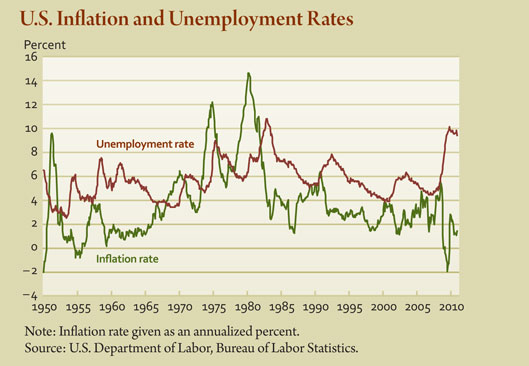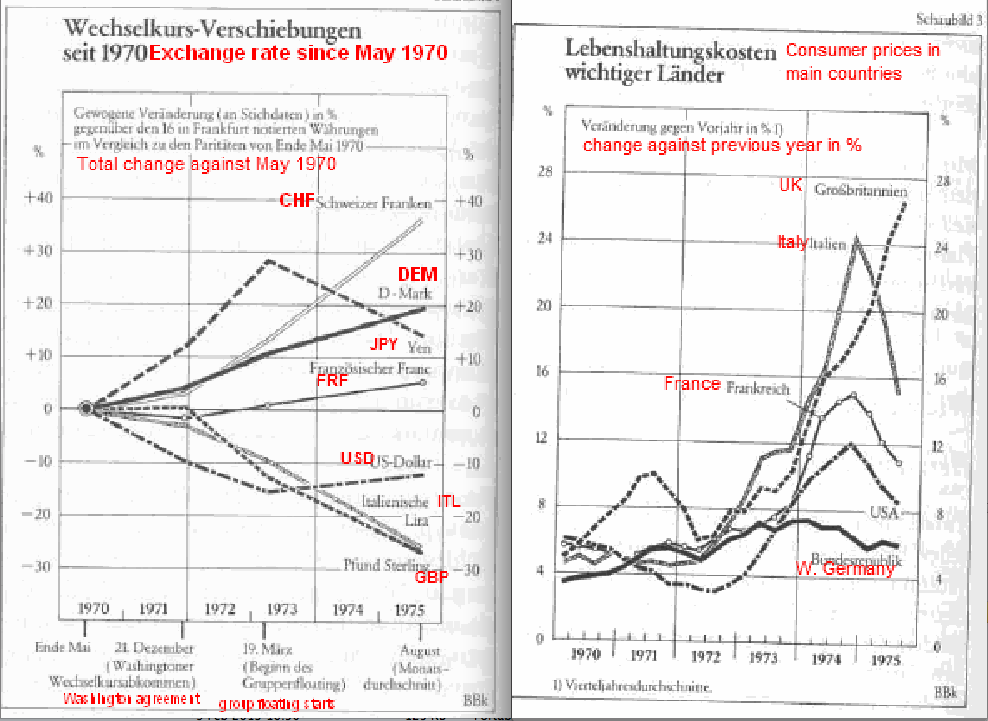Rational expectations led to a wage-price spiral in the United States, which was followed later by a similar phenomenon in Germany. In both cases credit and money expansion paved the way for spending sprees.
An extract from history: Jimmy Carter beat the incumbent Gerald Ford in the presidential election of November 1976, an election dominated by concerns about high unemployment and high inflation. The country had gone through a sharp recession the previous year and the unemployment rate still averaged almost 8 percent. Although inflation had declined to 5 percent in 1976, less than half its 1974 level, it was almost the same as was considered embarrassing in 1969. Stagflation — the lethal combination of high unemployment and high inflation — reflected a change in consumers’ behavior. The “buy now, pay later” philosophy adopted by those with jobs overwhelmed the spending restraint of the unemployed, resulting in higher prices. Economists had to rework their thinking to take account of Milton Friedman’s warning that gains in employment would disappear once inflationary expectations caught up with reality.
During this period the economic term “rational expectations” was invented. The rational expectation on the employees side was that wages should rise more quickly than prices (aka real wages), while employers thought the opposite. This lead to a wage price spiral. Read more on stagflation and the price-wage spiral here.
 For the emerging markets, Latin America in particularly, this period was the boom leg of a credit cycle, while the United States saw a negative phase with periods of financial distress, especially in the years 1974 and 1981.
For the emerging markets, Latin America in particularly, this period was the boom leg of a credit cycle, while the United States saw a negative phase with periods of financial distress, especially in the years 1974 and 1981.
On May 5th, 1971 currency markets were closed, while from May 10, 1971 the German Mark was allowed to free float. On August 15, 1971, the U.S. did not want to redeem gold against 35 US$ any more, “Nixon closed the gold window,” and the Bretton Woods system completely collapsed; the world went to floating exchange rates. There was a similar picture in 1972, the U.S. balance of payments deficit was 21 billion, the U.S. increased the monetary base M0 by 6%, which lead to higher M1 of 7% but a higher M1 of 17% in Germany. The pattern that money grew more outside the U.S. represents a similar picture to the “currency war” in 2010/2011.
The following presentation focuses on the Breakdown of Bretton Woods but gives also a long-term overview.
The following is a nice presentation of the Bretton Woods period:
Response of monetary and fiscal policy:
The Fed’s Volcker responded with an interest hike up to 20% to get inflation under control. This ended in a (business cycle) recession, which was followed by lower rates, followed again by higher inflation. Therefore, Volcker decided to tighten a second time. But the rational expectation that inflation will always rise was destroyed.
<– Back to Financial Cycles Overview





















